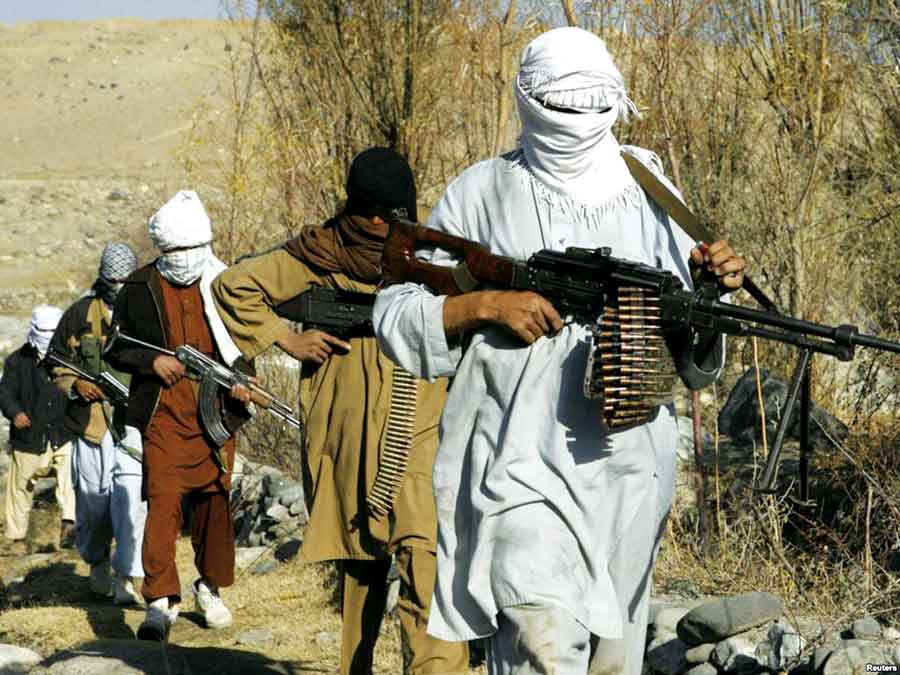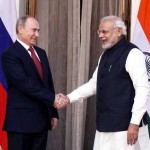IDR Blog
Pakistan’s State-Sponsored Terrorism: An Unholy Alliance of Decades

Pakistan’s collusion in the Pulwama terrorist attack (2019) was accepted recently by country’s Science and Technology Minister Fawad Chaudhary on the floor of its National Assembly. One of the deadliest attacks in decades, more than 40 Indian paramilitary personnel were killed in Jammu and Kashmir (J&K) on 14 February 2019 by a suicide bomber of Pakistan-based terrorist group Jaish-e-Mohammad (JeM).
Pakistan’s policy to create and foster terrorist groups to engage in low-intensity conflicts in its neighbourhood can be traced back to the 1980s. Since then, both Afghanistan and India have been facing the brunt of Pakistan’s state-sponsored cross-border terrorism. There exists a well-established nexus between Pakistan’s civilian government, military, Inter-Services Intelligence (ISI) and the numerous terrorist groups trained and armed in the country. For over several decades, Pakistan has been recruiting, training, arming, equipping and financing terrorists and helping them infiltrate across the Line of Control (LC) into Kashmir. It also supports the violence and terror orchestrated by the terrorist groups like Taliban and Islamic State in Khorasan Province (ISKP) in Afghanistan.
According to the European Foundation for South Asian Studies (EFSAS), there are several kinds of terrorist groups operating in and from Pakistan. These can be distinguished by their sectarian background (Ahl-e-Hadith, Deobandi, Jamaat-e-Islami etc.), and their areas of operation (Afghanistan, India, Pakistan).[i] Terrorist groups have surfaced in Pakistan since the 1980s. Initially, their mandate was to wage a war against the Soviets in Afghanistan in support of the US troops, at the end of which their primary mandate shifted to waging a proxy war against India in Kashmir since the late 1980s.
These terrorist groups include Al Qaeda in the Indian Subcontinent (AQIS), Tehrik-i-Taliban Pakistan (TTP), Hizbul Mujahideen (HM), Lashkar-e-Taiba (LeT), Jaish-e-Mohammad (JeM), Lashkar-e-Jhangvi (LeJ), Harkat-ul-Mujahideen (HuM), among others. Pakistan also formed the Muttahida Jihad Council or the United Jihad Council, a conglomerate of more than a dozen terrorist organisations, currently led by Syed Salahuddin of the HM with an aim to unify all terrorist groups fighting against India in Kashmir. Role of Pakistan is well-established in the numerous terror attacks carried out against India including the Parliament attack (2001), a suicide bombing near Indian embassy in Kabul (2008), terror attacks in Mumbai (2008), Akshardham temple in Gujarat (2002), Pathankot (2016), Uri (2016), Pulwama (2019), among others.
Pakistan’s army has been active in aiding and abetting infiltration along the LC. A few days back another infiltration bid by the Pakistani terrorists was foiled by India’s security forces. Subsequently, Pakistan indulged in multiple ceasefire violations along the LC in which five security forces personnel and six civilians lost their lives.[ii] Pakistan’s policy of ‘Bleeding India with a Thousand Cuts’ has been the sole reason behind the violence and hatred-filled environment in the Subcontinent. Sympathy and support for terrorists in Kashmir is so strong in Pakistan that its former leadership has gone to the extent of calling them Kashmiri “freedom fighters”.[iii]
Despite corroborating evidence on Pakistan’s role in sponsoring terrorism abroad, the international community tends to turn a blind eye. Most recent being the decision by the Financial Action Task Force (FATF) to retain Pakistan yet again on the list of ‘Jurisdictions Under Increased Monitoring’ (Grey List) till February 2021. The country has not been put under the ‘High-Risk Jurisdiction’ category (Black List) for its incessant support towards terror financing and money laundering.
Pakistan was included in the Grey List for the first time only in 2012 where it remained till 2015. FATF members remained ignorant of the previous multiple terrorist attacks against India orchestrated by the Pakistan-backed groups. With an efficient diplomatic approach by India, finally, Pakistan was put back on the Grey List in 2018. However, no effective remedial measures have been initiated by Pakistan and it has failed to check the flow of money for terror financing of groups such as JeM and LeT.
Before every plenary session of the FATF, few superficial measures have been undertaken such as the passing of three FATF bills in the joint session of the Parliament, imprisoning Hafiz Saeed for terror financing etc.[iv] On the contrary, Pakistan has discreetly removed the names of around 4,000 terrorists including the 2008 Mumbai terror attack mastermind and LeT commander Zaki-ur-Rehman Lakhvi from its so-called proscribed persons list maintained as part of its attempts at complying with the FATF recommendations.[v]
The superficial measures are undertaken only to avoid being relegated to the Black List and in reality, the country continues to be a nerve centre of terrorism. For instance, Ehsanullah Ehsan, the terrorist responsible for attacks on Nobel laureate Malala Yousafzai and 2014 Peshawar Army Public School massacre that killed 134 students and 15 staff members, allegedly escaped from detention. Moreover, after escape, he freely left the country undetected by the law enforcement agencies. Similarly, in J&K after abrogation of Article 370 Pakistan is attempting to rebrand terrorism as an indigenous struggle by creating offshoots of LeT with non-religious names like The Revolutionary Front (TRF). This raises doubts on the so-called crackdown promises made by Pakistan to the FATF and other international organisations.
It is interesting to note that the Members of the Foreign Service Programme class of 2016 at the University of Oxford, mainly comprised of diplomats from all over the world were asked ‘what three things come to mind when you hear about Pakistan?’ The majority of respondents cited nuclear weapons, terrorism, security, Islam, and the Taliban, lending support to the general view of Pakistan as a militarised state involved with Islamic extremism.[vi] Even though time and again the United Nations (UN) reports have emphasised upon the involvement of Pakistan in sponsoring terrorist attacks abroad, yet it continues to evade strong international sanctions.
Recently, Analytical Support and Sanctions Monitoring Team of the UN Security Council, reported that around 6,500 Pakistani terrorists belonging to LeT and JeM are operating in Afghanistan.[vii] Pakistan’s support for terrorism is so deeply entrenched in the society that the Prime Minister of the country openly revers Osama bin Laden, world’s most dangerous terrorist and mastermind of 9/11 terrorist attack, by calling him a “shaheed” (martyr) while addressing the National Assembly.[viii] In 2019 Pakistani Prime Minister had publicly acknowledged that the country harbours about 30,000 to 40,000 terrorists, trained and fought in parts of Afghanistan and Kashmir.[ix]
Clearly, greylisting alone is not enough to tackle the nexus prevailing between Pakistan and terrorism. Reportedly, India is planning to approach the International Court of Justice (ICJ) after the recent admissibility of the role of the Pakistani government in the Pulwama attack.[x]
India has also designated 18-Pakistan-based fugitive terrorists and associates as ‘individual terrorists’ under its amended Unlawful Activities Prevention Act (UAPA). Along with these, India must also strengthen its information warfare against Pakistan. There exist several instances wherein representatives of the Pakistani establishment have publicly acknowledged the country’s role in sponsoring terrorism.
India must be vocal and highlight such instances repeatedly during diplomatic engagements and on various print, broadcast and social media platforms. Efficacy of regional initiatives to combat terrorism undertaken by groups such as BIMSTEC must be further explored. There exist no known robust international mechanisms to counter-terrorism and the UN has failed to define the term in the last 75 years. Nevertheless, there must be ceaseless attempts to compel Pakistan to develop strong counterterrorism strategies focusing on terrorist groups.
End-Notes
[i] EFSAS, “Pakistan Army and Terrorism; an unholy alliance”, August 2017. https://www.efsas.org/publications/study-papers/pakistan-army-and-terrorism;-an-unholy-alliance/
[ii] PTI, “Multiple ceasefire violations by Pak along LoC: 5 soldiers among 11 killed”, LiveMint, 14 November 2020. https://www.livemint.com/news/india/multiple-ceasefire-violations-by-pak-along-loc-5-soldiers-among-11-killed-11605317675578.html
[iii] GK News Network, “Freedom fighters fighting in Kashmir, not terrorists: Musharraf”, Greater Kashmir, 10 December 2015. https://www.greaterkashmir.com/news/world/freedom-fighters-fighting-in-kashmir-not-terrorists-musharraf/
[iv] PTI, “Pakistan court sentences Hafiz Saeed to 11 years in jail in terror financing cases”, Economic Times, 12 February 2020. https://economictimes.indiatimes.com/news/defence/pakistan-court-sentences-hafiz-saeed-to-11-years-in-jail-in-terror-financing-cases/articleshow/74100508.cms
[v] Indo-Asian News Service, “Pakistan quietly removes 4,000 from its terrorist watchlist: Report”, The Hindustan Times, 21 April 2020. https://www.hindustantimes.com/world-news/pak-removes-names-of-4-000-terrorists-from-its-watchlist/story-yAQG1Qst4llUwFSDwZBPKL.html
[vi] Nadir Cheema, “Pakistan’s Global Image: Perception and Causes”, Royal Society for Asian Affairs, 16 November 2016. https://rsaa.org.uk/blog/pakistans-global-image-perception-causes/
[vii] Dipanjan Roy Chaudhury, “’Pakistan continues to promote terror notwithstanding pandemic’”, Economic Times, 7 July 2020. https://economictimes.indiatimes.com/news/defence/pakistan-continues-to-promote-terror-notwithstanding-pandemic/articleshow/76841645.cms
[viii] ANI, “6,500 Pak Terrorists Present In Afghanistan, Most Belong To TTP: UN Report”, Business World, 26 July 2020. http://www.businessworld.in/article/6-500-Pak-terrorists-present-in-Afghanistan-most-belong-to-TTP-UN-report/26-07-2020-301490/
[ix] ANI, “Imran Khan’s big admission in US, says 40,000 terrorist still in Pakistan”, Hindustan Times, 24 July 2019. https://www.hindustantimes.com/india-news/pakistan-still-has-30-000-40-000-militants-admits-imran-khan/story-ryBMLqsuxst9fPW6GmvUJN.html
[x] India Defence News, “After Pakistan Minister’s Pulwama Attack Confession, India to Approach International Court of Justice, Seeks Blacklisting of Pakistan By FATF”, 31 October 2020. https://www.opindia.com/2020/10/india-to-approach-international-court-of-justice-against-pakistan-on-pulwama/
Courtesy: First published www.claws.in
Post your Comment
One thought on “Pakistan’s State-Sponsored Terrorism: An Unholy Alliance of Decades”
 Loading Comments
Loading Comments




How and Where ?
Pakistan is the land of Sufis and Saints and Nanak !
SAMPLE THE DUBIOUS NAGROTA ATTACK – It is a Bogus hit planned by an Indian Clown !
See the video and see the sparks coming out ! Just like a Diwali Cracker !
Is this the trail of RDX ?
How did the Indian Bania Army hit the truck ? By a Missile ? Y is the truck intact ? It should have been blown to bits !
Or was it a grenade lobbed or a IED ? IED would have also blown the truck to bits !
Y is there no sound in the video ? Was it 1 or more explosions ?
Y are there no burn marks on the recovered RDX and grenades ?
The Klashnikovs are mangled ! An explosion which can mangle a Klash would also shred the bodies of the mujahideen ! But they were not !
The physical disturbance and explosion would have at least set off a grenade carried in the truck – which would have then set off a chain reaction – but it DID NOT !
Best of all – even with an Indian Army missile hit – the RDX in the truck did not explode ! And if RDX explodes all the vehicles nearby would be blown to bits – but there was not a scratch on them ! PRECISION MUNITION – is it ?
My My !
How did that happen ? SMART WEAPONS !
It is all a Bogus Lie ! dindooohindoo